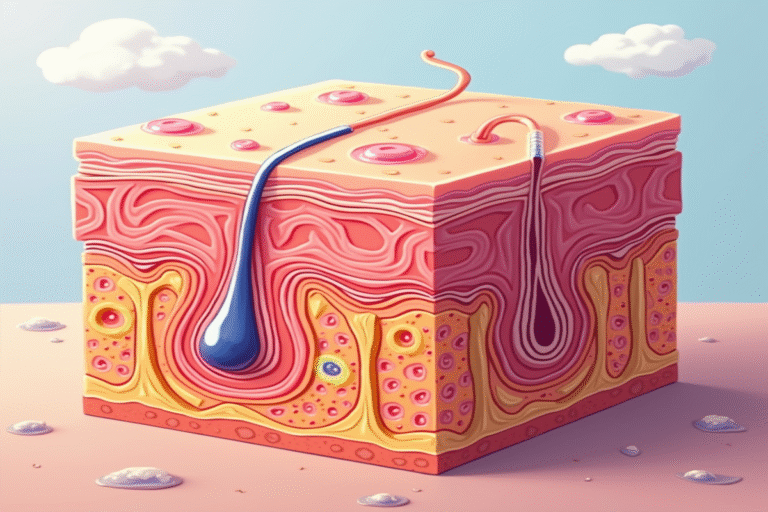Did you know that right now, as you’re reading this, your body is performing an incredible act of biological renewal? Beneath your awareness, billions of skin cells are constantly being born, maturing, and dying in a precisely organized cycle that results in your entire outer skin layer being replaced roughly every 28 days. This silent regeneration continues throughout your life and is a fascinating example of your body’s ability to renew itself.
Understanding Your Skin’s Structure
Your skin, the largest organ in your body, is made up of three primary layers:
- Epidermis – The outermost layer you see and touch
- Dermis – The middle layer containing blood vessels, nerve endings, and collagen
- Hypodermis – The deepest layer, mostly fat and connective tissue
The epidermis is where the renewal takes place. Its deepest part, called the stratum basale, contains special cells known as keratinocytes that constantly divide to create new skin cells. These new cells travel upwards through the layers of the epidermis toward the surface.
The Life Cycle of Skin Cells
The regeneration process follows four key stages:
1. Birth in the Basal Layer
New skin cells are produced in the basal layer by mitosis. Stem cells divide to form keratinocytes. Amazingly, you shed about 50,000 skin cells every minute, requiring your body to constantly produce new ones at an incredible rate.
2. Maturation and Movement
As keratinocytes move upward through the epidermis, they flatten, strengthen, and begin producing keratin—a tough protein that protects your skin. During this journey, the cells gradually lose their nuclei and other organelles, essentially dying as they get closer to the surface.
3. Formation of the Cornified Layer
When these cells reach the outermost layer (stratum corneum), they become corneocytes—flat, dead cells filled with keratin. Packed together like bricks, these cells form a waterproof barrier that protects your body from the environment, bacteria, and prevents dehydration.
4. Shedding the Surface
After about two weeks on the surface, these dead cells break away and shed in a process called desquamation. While individual flakes are too small to see, you lose about 500 million skin cells every day—adding up to roughly 1.5 pounds of skin per year.
The Timeline of Renewal
From birth in the basal layer to shedding from the surface, a skin cell’s journey takes about 28–30 days in a healthy adult. This means the skin you have now was not the same as a month ago. This cycle is similar to the lunar month, though the resemblance is purely coincidental.
What Influences Skin Regeneration?
Not all skin regenerates at the same rate. Factors that affect this process include:
- Age: Children’s skin renews every 14 days, while for older adults, the process can take 45–90 days
- Body location: Skin on your face renews more quickly than skin on your arms or legs
- Health conditions: Diseases like psoriasis greatly speed up regeneration (to 3–4 days), while diabetes can slow it down
- Lifestyle factors: Smoking, excessive sun exposure, poor nutrition, and dehydration can impair normal regeneration
Amazing Skin Facts
Your skin’s abilities are even more impressive when you consider:
- Your skin makes up about 15% of your total body weight
- The surface area of adult skin is about 22 square feet
- Each square inch contains around 650 sweat glands, 20 blood vessels, and more than 1,000 nerve endings
- Dust in your home is made up of about 70–80% dead skin cells
- During your lifetime, you’ll shed nearly 40 pounds of skin
Nature’s Elegant Solution
This ongoing renewal is an evolutionary triumph. Instead of depending on a complicated repair system for damaged skin, evolution favored a simple method: continuous replacement. This way, minor injuries, exposure to toxins, or attachment of microbes are regularly handled by shedding the outermost layer.
The next time you wash your face or dust a shelf, remember the amazing process happening within your skin. This endless cycle of renewal is just one example of the invisible miracles your body performs every day to keep you healthy, resilient, and alive.





